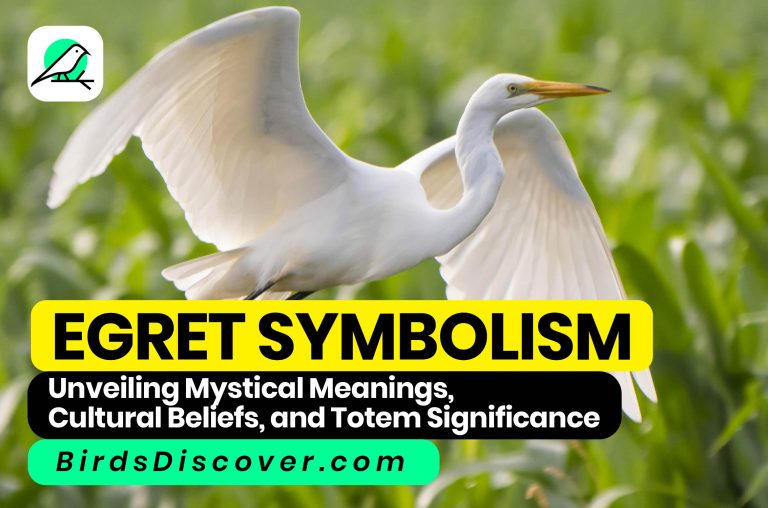Great Frigatebird: Nature’s Aviator in Focus
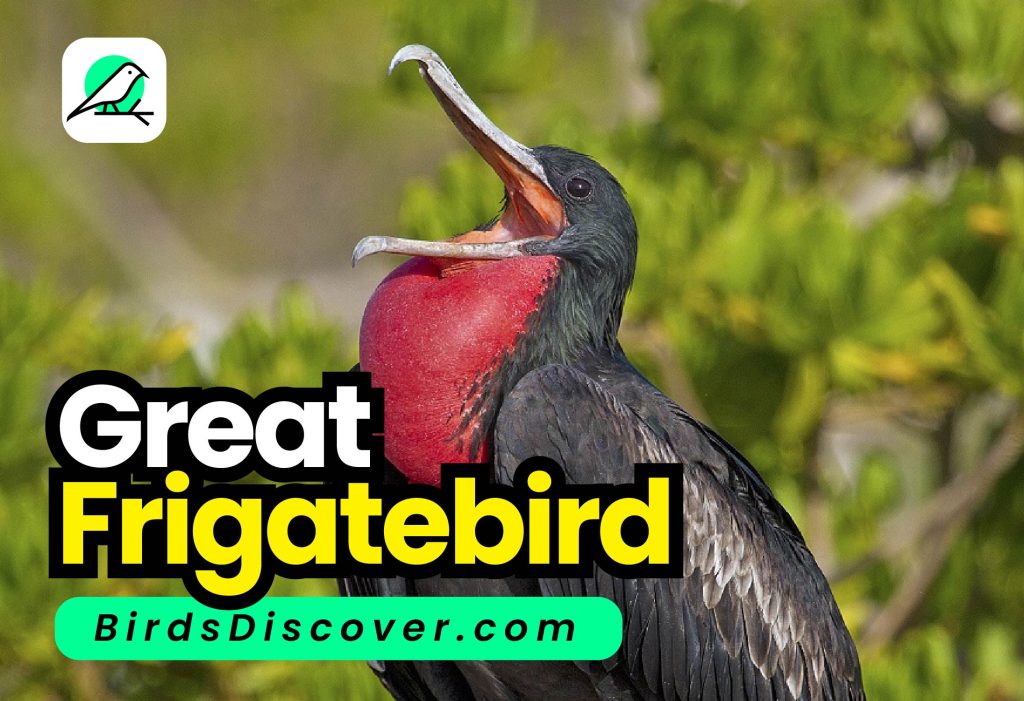
They prefer coastal areas, often nesting on cliffs and in trees on remote islands.
Not currently endangered, but conservation efforts are important to protect their habitats.
Great Frigatebird
The Great Frigatebird (Fregata minor) is a large seabird known for its impressive wingspan, which can reach up to 2.3 meters (7.5 feet). Found primarily in tropical and subtropical oceans, this bird is most commonly seen soaring over the open seas, using its long, slender wings to glide effortlessly for hours. The Great Frigatebird has a distinctive appearance, with a glossy black plumage in males and a white underbelly in females. Males are particularly notable for their bright red gular sac, which they inflate during the breeding season to attract mates.
These birds are exceptional aerialists, capable of staying aloft for days and even sleeping while flying. Unlike many seabirds, Great Frigatebirds do not dive for fish; instead, they snatch prey from the water’s surface or engage in kleptoparasitism, where they harass other birds until they regurgitate their catch. Despite their mastery of the skies, they are awkward on land, often nesting in large colonies on remote islands where they can raise their young with minimal disturbance. The Great Frigatebird is a remarkable example of adaptation to life in the open ocean, relying on its exceptional flight capabilities and opportunistic feeding strategies to survive.
Sound
Scientific Classification
| Taxonomic Rank | Classification |
|---|---|
| Domain | Eukaryota |
| Kingdom | Animalia |
| Phylum | Chordata |
| Class | Mammalia |
| Order | Carnivora |
| Family | Felidae |
| Genus | Panthera |
| Species | Panthera leo |
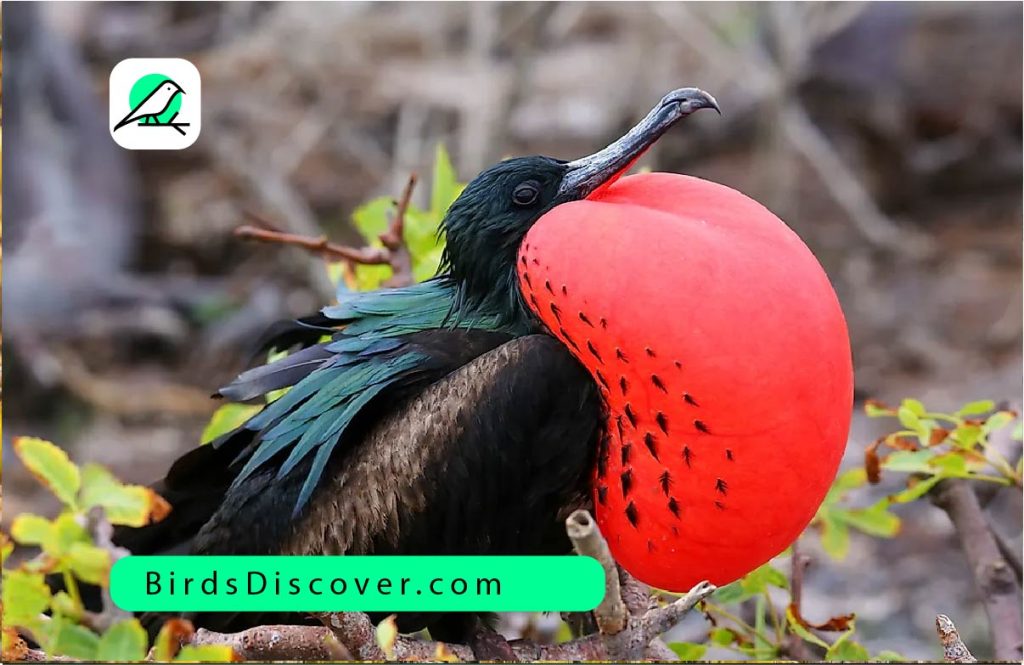


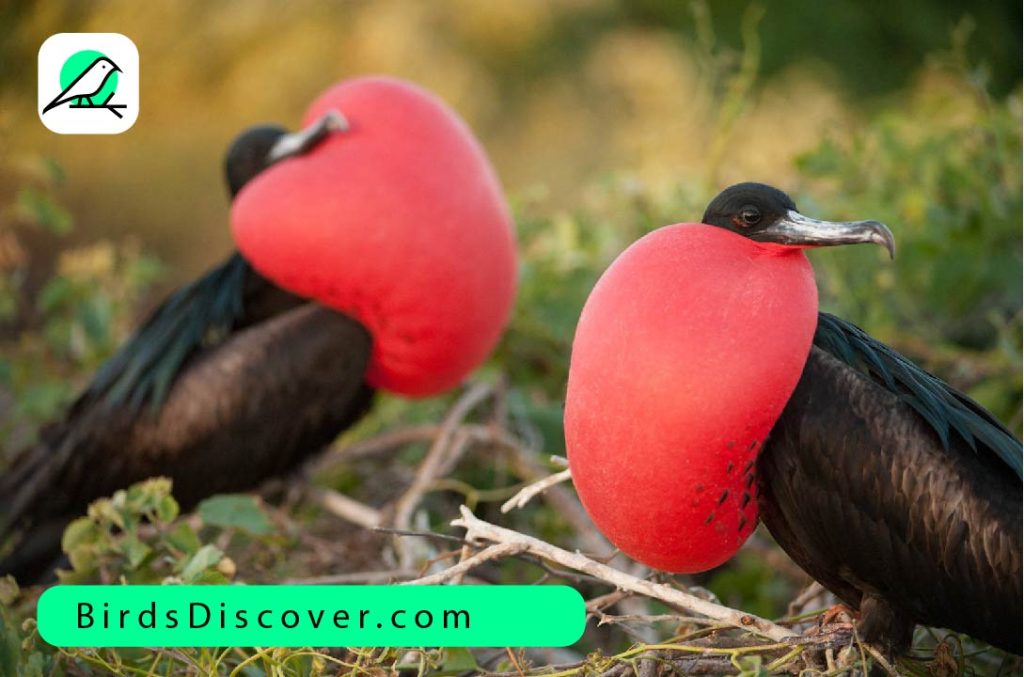
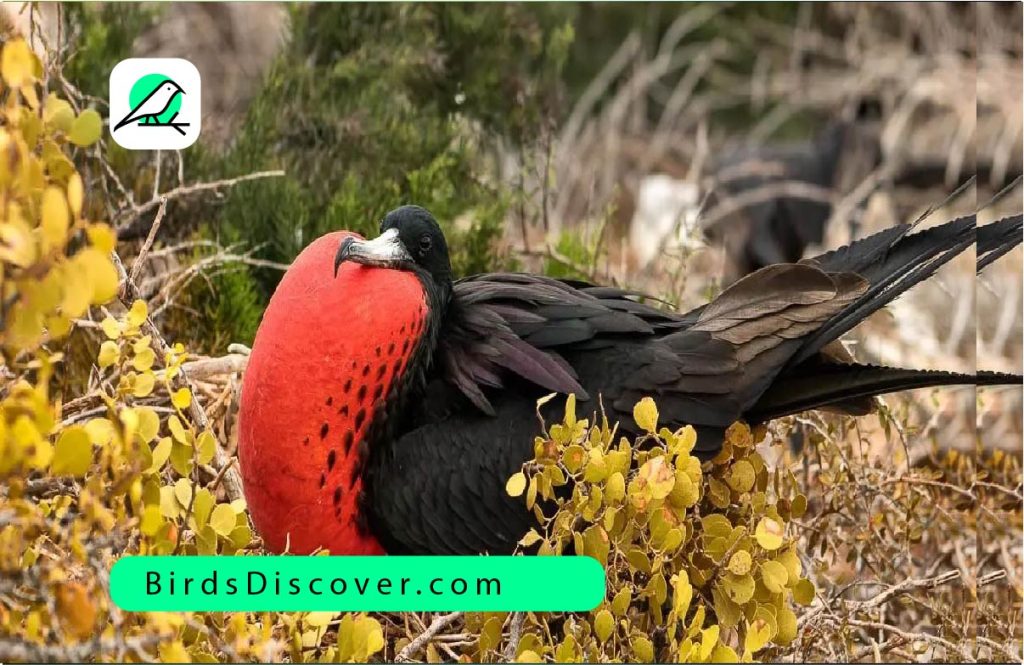

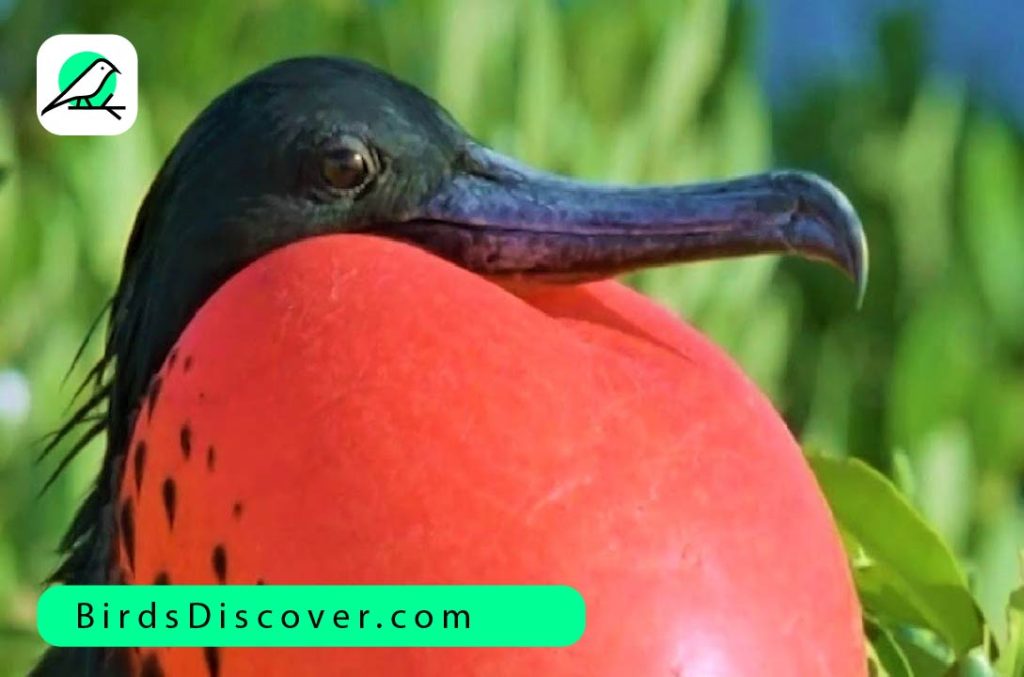
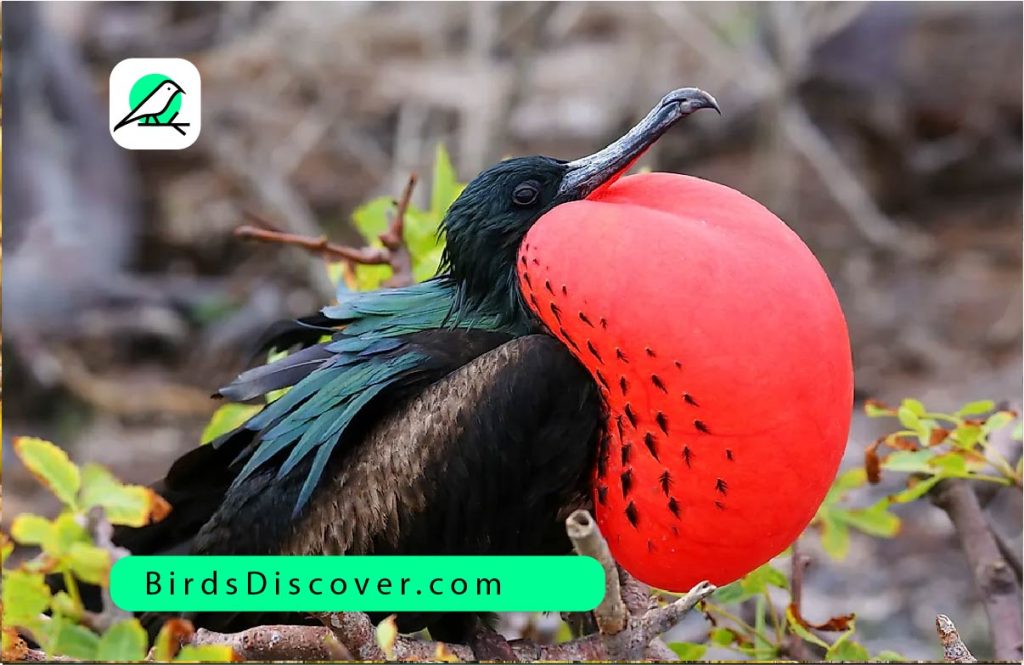
Summary
The Great Frigatebird (Fregata minor) is a large seabird with a wingspan of up to 2.3 meters, known for its exceptional aerial abilities. Found in tropical and subtropical oceans, it glides effortlessly over the sea, with males distinguished by their glossy black feathers and bright red gular sacs used during courtship. Unlike many seabirds, it captures prey from the water’s surface or steals food from other birds. Though graceful in the air, it is awkward on land and nests in large colonies on remote islands.
Description:
The Great Frigatebird is a large seabird with an impressive wingspan, characterized by long wings, a forked tail, and lightweight body, allowing it to soar effortlessly over the ocean.
Males are known for their glossy black feathers and distinctive red gular sacs, while females have a contrasting white underbelly; they often engage in kleptoparasitism, stealing food from other birds.
Sexual Dimorphism:
Sexual dimorphism in the Great Frigatebird (Fregata minor) is quite pronounced, with distinct differences between males and females:
- Male Characteristics: Males have striking glossy black plumage and a large, inflatable red gular sac that they display prominently during the breeding season to attract females. Their overall size is slightly larger, and they exhibit longer wings and tails compared to females.
- Female Characteristics: Females are generally smaller and have a more subdued appearance, featuring a white underbelly and brownish-black upperparts. Unlike males, they do not possess a gular sac, and their coloration helps with camouflage while nesting and raising chicks.
This dimorphism plays a crucial role in mating displays and reproductive success within their breeding colonies.
Breeding Season:
During the breeding season, which typically occurs from late winter to early summer, male Great Frigatebirds display their bright red gular sacs to attract females, engaging in elaborate courtship displays that include puffing out their sacs, vocalizations, and aerial acrobatics.
Feeding Habits:
Great Frigatebirds have unique feeding habits characterized by opportunistic foraging techniques:
- Kleptoparasitism: They are known for stealing food from other seabirds, often chasing them until they regurgitate their catch. This behavior allows them to acquire food without expending energy on hunting.
- Surface Feeding: Great Frigatebirds also feed by snatching fish and other prey from the ocean’s surface while in flight, using their sharp eyesight to locate suitable targets.
- Diet: Their diet primarily consists of fish, squid, and crustaceans, which they obtain through both kleptoparasitism and surface feeding methods, showcasing their adaptability to oceanic environments.
Habitat and Distribution:.
- Habitat: They prefer remote islands and coastal areas, often nesting on cliffs, trees, and scrubland, where they can raise their young with minimal disturbance. Their nesting sites are usually found in colonies, which provide protection from predators.
- Distribution: Great Frigatebirds are distributed across the Indian and Pacific Oceans, with significant populations found in the Galápagos Islands, the Marquesas Islands, and various islands in the Caribbean. They are highly migratory and can travel long distances over the open ocean in search of food, showcasing their adaptability to diverse marine environments.
Pelagic Feeding Areas:
Great Frigatebirds (Fregata minor) utilize pelagic feeding areas that are rich in marine life:
- Open Oceans: They are often found in the open waters of tropical and subtropical oceans, where they can cover vast distances while searching for food. These areas are characterized by warm waters that support abundant fish and squid populations.
- Upwelling Zones: Frigatebirds are attracted to regions where nutrient-rich waters rise to the surface, known as upwelling zones. These areas are typically teeming with small fish and other prey, making them ideal for foraging.
- Near Islands and Coastal Areas: While they primarily forage over open waters, Great Frigatebirds also frequent coastal regions and islands where they can find abundant food sources and easily steal from other seabirds. These pelagic feeding areas are crucial for their survival, as they rely on the availability of prey for sustenance.
Nesting Rituals:
Great Frigatebirds (Fregata minor) engage in elaborate nesting rituals during the breeding season:
- Courtship Displays: Males perform captivating courtship displays to attract females, which include inflating their bright red gular sacs, puffing out their chests, and engaging in vocalizations. They may also perform aerial acrobatics to showcase their fitness and attract mates.
- Nesting Sites: Once a female selects a mate, they will nest in colonies on remote islands or coastal regions, often in trees or on the ground. The chosen site is usually in a secluded area to protect the nest from predators.
- Nest Building: Both parents participate in building the nest, which is typically a simple structure made of twigs, grass, and other available materials. After laying a single egg, both parents share incubation duties, ensuring the egg is kept warm and protected until it hatches. This cooperative breeding behavior helps increase the chances of survival for their chick.
Colonial Nesting:
Great Frigatebirds (Fregata minor) exhibit colonial nesting behavior, which has several important aspects:
- Social Structure: They nest in large colonies, often consisting of hundreds or even thousands of individuals. This social structure provides safety in numbers, as the presence of many birds can deter potential predators.
- Nesting Locations: Colonies are typically established on remote islands or coastal areas with suitable vegetation, such as mangroves or low shrubs, providing cover and protection for nests.
- Communication and Bonding: Within these colonies, birds engage in various vocalizations and displays, fostering social bonds among individuals. This communal aspect aids in mate selection, as males can display their courtship behaviors to multiple females simultaneously.
- Shared Responsibilities: While each pair raises their own chick, the presence of a large colony allows for increased vigilance against threats, contributing to higher survival rates for the young. The colony dynamics help facilitate the sharing of information about food sources and environmental conditions.
Cultural Significance:
Great Frigatebirds (Fregata minor) hold cultural significance in various regions, particularly among coastal and island communities:
- Symbolism: In some cultures, Great Frigatebirds are seen as symbols of freedom and grace due to their impressive flying abilities and expansive wingspan. They are often depicted in art, literature, and folklore as representations of the open ocean and the beauty of nature.
- Ecotourism: These birds attract birdwatchers and ecotourists to remote islands, contributing to local economies and promoting conservation efforts. Their unique behaviors and striking appearance make them popular among wildlife enthusiasts, fostering appreciation for marine ecosystems.
- Traditional Practices: In certain island cultures, Great Frigatebirds may be part of traditional ecological knowledge and practices. They can serve as indicators of environmental health and fish availability, influencing fishing practices and resource management.
- Research and Education: As a species of interest in ornithological studies, Great Frigatebirds help raise awareness about seabird conservation and the importance of preserving marine habitats. Educational programs often highlight their role in ecosystems and the challenges they face, promoting broader environmental conservation efforts.
Traditional Naming:
Great Frigatebirds (Fregata minor) have been given various traditional names in different cultures, often reflecting local language and significance:
- Indigenous Names: Many Indigenous communities in the Pacific Islands have their own names for the Great Frigatebird, often linked to cultural beliefs, local ecology, and traditional stories. These names can reflect the bird’s behavior, appearance, or its role in the local environment.
- Cultural Significance: In some cultures, the names given to Great Frigatebirds may symbolize freedom, navigation, or the open ocean, emphasizing their ability to soar for long distances and their presence in coastal ecosystems.
- Regional Variations: The traditional names may vary widely from region to region, with some communities associating specific stories or folklore with the birds. These names can be important for preserving cultural heritage and passing down knowledge about local wildlife.
- Conservation Implications: Traditional naming can also play a role in conservation efforts, as recognizing and valuing these birds within cultural contexts may enhance community engagement in protecting their habitats and promoting sustainable practices.
Human Interaction:
Human interaction with Great Frigatebirds (Fregata minor) can take various forms, both positive and negative:
- Conservation Efforts: Many organizations and local governments work to protect the habitats of Great Frigatebirds, especially on remote islands where they nest. Conservation initiatives often focus on preserving nesting sites from development, pollution, and invasive species that threaten their populations.
- Ecotourism: The presence of Great Frigatebirds attracts birdwatchers and tourists to coastal regions and islands, providing economic benefits to local communities. Ecotourism encourages conservation awareness and promotes sustainable practices, fostering a positive relationship between humans and wildlife.
- Research and Education: Scientists study Great Frigatebirds to understand their behavior, ecology, and the impacts of climate change on their populations. Educational programs often use these birds to raise awareness about seabird conservation and the importance of protecting marine ecosystems.
- Threats from Human Activity: Despite conservation efforts, Great Frigatebirds face threats from human activities, including habitat destruction, plastic pollution, and climate change, which can affect their food sources and nesting sites. Overfishing can also reduce prey availability, making it challenging for these birds to find food.
- Cultural Connections: In some coastal communities, Great Frigatebirds are part of local folklore and traditions, reflecting a long-standing connection between the species and human cultures. This cultural significance can foster a sense of responsibility toward protecting the species and their habitats.
Taxonomy
The Great Frigatebird (Fregata minor) belongs to the domain Eukaryota, indicating it is composed of complex cells with a nucleus. It is classified within the kingdom Animalia, as it is a multicellular organism that exhibits heterotrophic nutrition. This bird is part of the phylum Chordata, which includes animals with a notochord, and it falls under the class Aves, designating it as a bird. The Great Frigatebird is categorized in the order Suliformes, which includes various seabirds. Within this order, it is placed in the family Fregatidae, comprising frigatebirds. The genus Fregata encompasses this species, and its scientific name is Fregata minor. There are several recognized subspecies of the Great Frigatebird, including Fregata minor minor (Atlantic Great Frigatebird), Fregata minor ariel (Pacific Great Frigatebird), and Fregata minor ridgwayi (Magnificent Frigatebird). This taxonomy illustrates the bird’s classification within the broader context of avian species.

Subspecies
| Subspecies | Scientific Name | Distribution |
|---|---|---|
| 1. Atlantic Great Frigatebird | Fregata minor minor | Caribbean Sea, Gulf of Mexico, and parts of the Bahamas. |
| 2. Pacific Great Frigatebird | Fregata minor ariel | Eastern Pacific, including Galápagos Islands and French Polynesia. |
| 3. Magnificent Frigatebird | Fregata minor ridgwayi | Caribbean Sea and coasts of Central and South America. |
| 4. Christmas Island Frigatebird | Fregata minor andrewsi | Exclusive to Christmas Island in the Indian Ocean. |
| 5. Ascension Island Frigatebird | Fregata minor obloua | Found only on Ascension Island in the South Atlantic Ocean. |
Description
The Great Frigatebird (Fregata minor) is a remarkable seabird known for its impressive wingspan, which can reach up to 2.3 meters (7.5 feet), making it one of the largest flying birds. Males are easily identifiable by their glossy black plumage and their striking red gular sac, which they inflate during courtship displays to attract females. Females, on the other hand, have a more subdued appearance with a white underbelly and brownish-black feathers on their backs.
These birds have long, pointed wings and a deeply forked tail, which enhance their ability to soar effortlessly for extended periods over the ocean. Great Frigatebirds are highly skilled in aerial maneuvering, allowing them to glide gracefully while searching for food. They primarily feed on fish and squid, often employing kleptoparasitism—stealing food from other seabirds—rather than diving for their prey.
Nesting in large colonies on remote islands, they are social birds that communicate through a variety of vocalizations and displays. Their unique adaptations to the marine environment and their striking physical characteristics make the Great Frigatebird a fascinating species within the avian world.
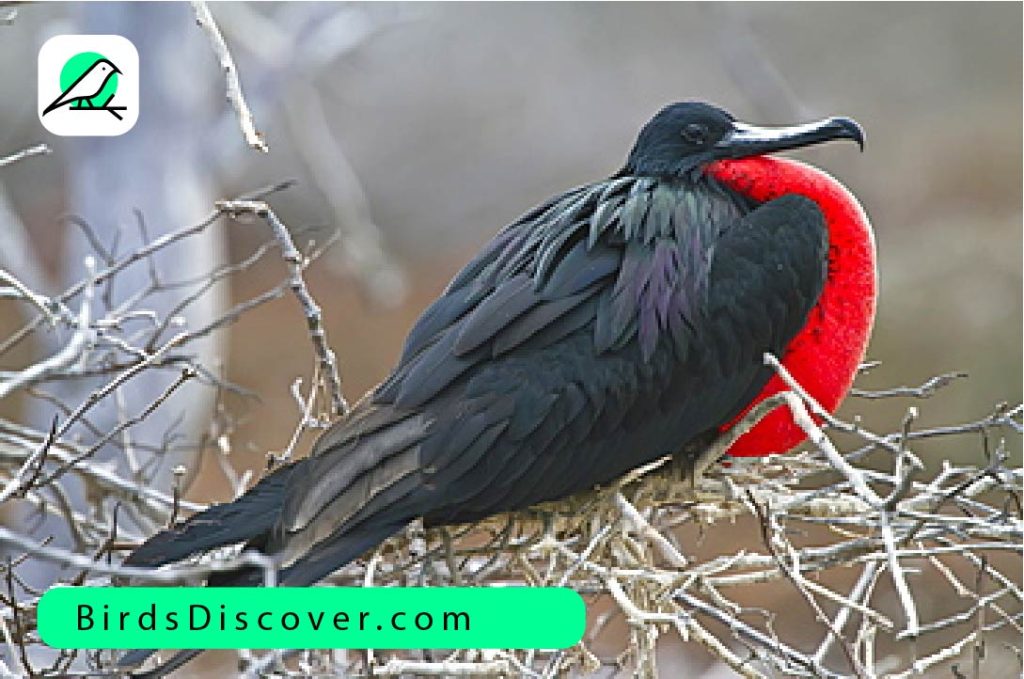
Distribution and Habitat
The Great Frigatebird (Fregata minor) is widely distributed across tropical and subtropical regions of the world’s oceans.
Distribution
- Geographical Range: The Great Frigatebird can be found in the Atlantic and Pacific Oceans.
- Atlantic Subspecies: The Atlantic Great Frigatebird (Fregata minor minor) is primarily located in the Caribbean Sea, Gulf of Mexico, and along the coasts of Central America.
- Pacific Subspecies: The Pacific Great Frigatebird (Fregata minor ariel) is commonly found around the Galápagos Islands and across the eastern Pacific, including various islands in French Polynesia.
- Other Subspecies: The Magnificent Frigatebird (Fregata minor ridgwayi) inhabits areas in the Caribbean and along the northern coasts of South America.
Habitat
- Nesting Sites: Great Frigatebirds prefer remote islands and coastal regions for nesting, often choosing sites with low vegetation such as mangroves, shrubs, and sometimes trees.
- Foraging Areas: They typically forage over open oceans, often near upwelling zones where nutrient-rich waters support abundant marine life. These areas are crucial for locating their primary food sources, including fish and squid.
- Colonial Nesting: They nest in large colonies, which provides safety from predators and fosters social interactions among birds, essential for their breeding and rearing of chicks.
The combination of these distribution patterns and habitat preferences allows Great Frigatebirds to thrive in diverse marine environments.
Species in same Genus
| Genus | Species |
|---|---|
| Fregata | minor |
| Fregata | magnificens |
| Fregata | ariel |
| Fregata | andrewsi |
| Fregata | aquila |
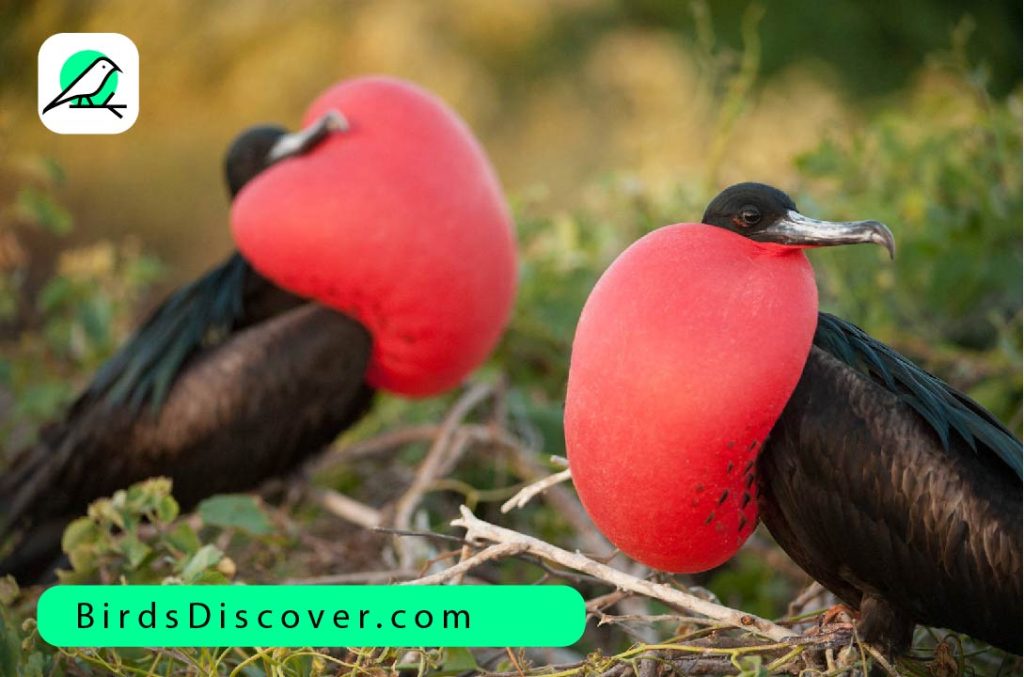
Behaviour
Feeding
Great Frigatebirds (Fregata minor) have distinctive feeding habits that are primarily opportunistic:
- Kleptoparasitism: One of the most notable feeding behaviors of Great Frigatebirds is their tendency to engage in kleptoparasitism, where they steal food from other seabirds. They often chase and harass smaller birds, forcing them to regurgitate their catch, which the frigatebirds then consume.
- Surface Feeding: In addition to stealing food, Great Frigatebirds also feed by snatching fish and squid from the surface of the ocean while in flight. They have excellent eyesight, which allows them to spot prey from great heights.
- Diet: Their diet mainly consists of fish, squid, and crustaceans. They often rely on areas with high fish abundance, such as upwelling zones, where nutrient-rich waters support large populations of prey.
- Foraging Strategy: Great Frigatebirds can cover vast distances in search of food, utilizing their strong wings for long glides over the ocean. They may also follow fishing boats to take advantage of discarded catch or bait.
- Energy Conservation: Since Great Frigatebirds do not dive for food like many other seabirds, they are highly adapted to conserve energy while foraging. Their feeding strategies allow them to thrive in diverse marine environments without the need for frequent land-based feeding.
Breeding
| Aspect | Details |
|---|---|
| Feeding Behavior | Primarily opportunistic; engages in kleptoparasitism and surface feeding. |
| Kleptoparasitism | Steals food from other seabirds by chasing them until they regurgitate their catch. |
| Surface Feeding | Snatches fish and squid from the ocean’s surface while flying, utilizing excellent eyesight. |
| Diet | Mainly consists of fish, squid, and crustaceans, often targeting areas with high fish abundance. |
| Foraging Strategy | Covers vast distances in search of food; follows fishing boats for discarded catch. |
| Energy Conservation | Adapted to conserve energy by gliding over the ocean rather than diving for prey. |
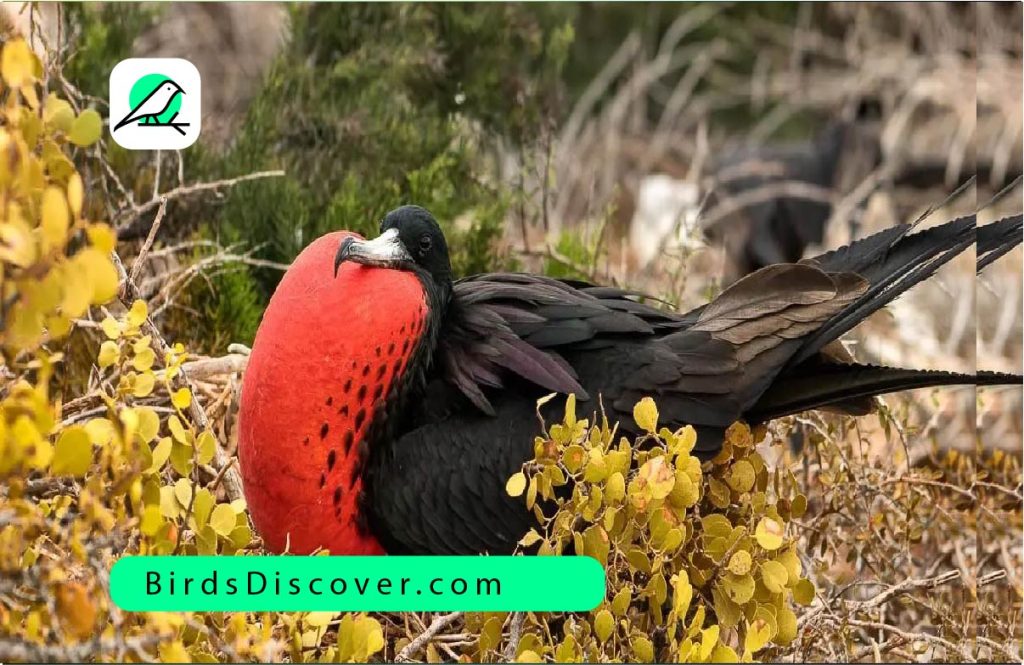
Voice
Great Frigatebirds (Fregata minor) produce distinctive vocalizations, especially during the breeding season, with males emitting deep, booming calls amplified by their inflated red gular sacs. These sounds are crucial for attracting females and establishing territory among competing males. Additionally, their vocalizations facilitate communication within colonies and help chicks signal to their parents.
Guttural Calls:
Great Frigatebirds (Fregata minor) are known for their guttural calls, which play a significant role in their communication, especially during the breeding season. Here are some key aspects of their guttural calls:The guttural calls are deep, throaty sounds that can carry over long distances. These calls are often described as booming or honking, making them distinctive among seabirds.
Wing Whistles:
Great Frigatebirds (Fregata minor) produce wing whistles, a unique sound created during flight as air rushes through the primary feathers of their wings. These whistles serve as an additional form of communication among birds, particularly during social interactions and while navigating through their nesting colonies.
Bill Clattering
Great Frigatebirds (Fregata minor) engage in bill clattering, a behavior characterized by the rapid opening and closing of their beaks, often accompanied by vocalizations. This display is commonly observed during courtship and territorial disputes, where males use bill clattering to attract females and assert dominance over rivals. The sound produced by bill clattering adds to the acoustic environment of breeding colonies, enhancing communication among the birds.
Speed
Great Frigatebirds (Fregata minor) exhibit a distinctive behavior known as bill clattering, which involves rapid snapping or clacking of their bills. This vocalization is often part of their courtship display and social interactions within colonies. Males will engage in bill clattering to assert dominance and attract females, creating a rhythmic and engaging sound. The clattering may also serve to communicate with other birds, indicating their presence and intentions. This behavior enhances their elaborate mating rituals and contributes to the overall social dynamics of frigatebird colonies.
Lifespan
The lifespan of the Great Frigatebird (Fregata minor) typically ranges from 15 to 20 years in the wild. Some individuals may live longer under optimal conditions. Factors such as predation, food availability, and environmental conditions can influence their longevity. These birds often reach sexual maturity around 5 to 6 years of age, at which point they begin to breed and contribute to the population. Their long lifespan, combined with low reproductive rates, makes conservation efforts crucial for maintaining healthy populations.
Status
The Great Frigatebird (Fregata minor) is currently classified as Least Concern by the International Union for Conservation of Nature (IUCN). This status indicates that the species is not currently facing an immediate risk of extinction across its range.
Key Points on Status:
- Population Trends: While populations of Great Frigatebirds are generally stable, some local populations may face pressures due to habitat loss and environmental changes.
- Threats: Major threats include habitat destruction from human activities, such as development and pollution, as well as climate change impacts that affect their food sources and nesting sites.
- Conservation Efforts: Various conservation measures are in place to protect their breeding habitats, particularly on remote islands, where nesting sites are safeguarded from human interference and invasive species.
- Monitoring: Ongoing monitoring of populations and breeding success is important to ensure that the species remains healthy and to address any emerging threats.
Overall, while the Great Frigatebird is not currently endangered, continued conservation efforts are essential to maintain its populations and habitats.
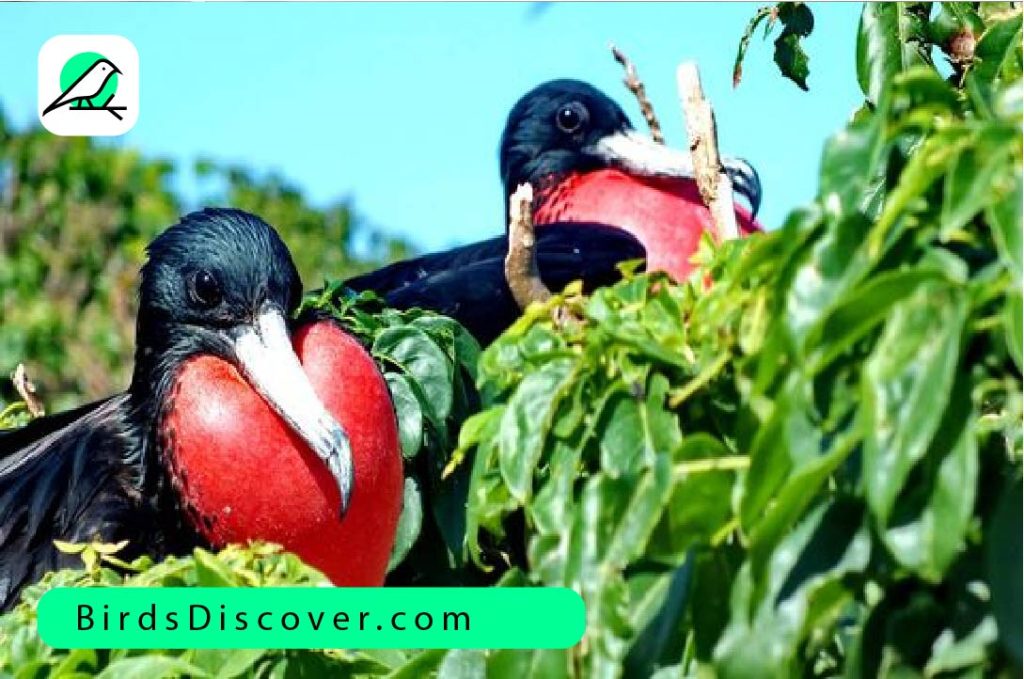
Threats
Habitat Disturbance:
Habitat disturbance poses significant threats to the Great Frigatebird (Fregata minor) and can impact their nesting and foraging behaviors. Here are key aspects of habitat disturbance affecting this species:
Invasive Species:
The introduction of non-native plants and animals can disrupt the natural ecosystem, leading to competition for resources. Invasive predators, such as rats and cats, pose direct threats to eggs and chicks, leading to decreased survival rates.
Climate Change:
Rising sea levels and changing weather patterns can alter the availability of suitable nesting sites and affect food availability. Extreme weather events, such as hurricanes, can destroy nesting colonies and impact food sources.
Marine Pollution:
Marine pollution, including plastic waste and chemical runoff, can affect the quality of their foraging areas. Contaminants can accumulate in the food web, impacting the health of Great Frigatebirds and their prey.
Overfishing:
Overfishing and unsustainable fishing practices can deplete the fish populations that Great Frigatebirds rely on for food. This can lead to food scarcity, affecting their foraging success and overall health.
Human Disturbance:
Urbanization, tourism, and infrastructure development on coastal areas can lead to the destruction of critical nesting habitats. The loss of vegetation and safe nesting sites can reduce breeding success.
Oil Spills:
Oil spills contaminate the ocean surface, affecting the availability of fish and squid, which are essential components of the Great Frigatebird’s diet. This contamination can lead to food scarcity and nutritional stress.
Global Fisheries:
Great Frigatebirds primarily feed on fish and squid, relying on healthy fish populations for sustenance. Overfishing can deplete these food sources, leading to nutritional stress and decreased survival rates for frigatebirds.
Common Names in Different Languages
| Language | Common Name |
|---|---|
| English | Great Frigatebird |
| Spanish | Fragata grande |
| French | Fregate à tête noire |
| German | Große Fregatte |
| Portuguese | Fregata-grande |
| Italian | Fregata maggiore |
| Dutch | Grote fregatvogel |
| Russian | Большой фрегат |
| Japanese | オオフリゲートペンギン (Ōfurigēto pengin) |
| Chinese | 大军舰鸟 (Dà jūnjiàn niǎo) |

FAQs
What is the wingspan of the Great Frigatebird?
The wingspan of the Great Frigatebird can reach up to 2.3 meters (7.5 feet), making it one of the largest flying birds.
Where do Great Frigatebirds nest?
Great Frigatebirds typically nest in colonies on remote islands and coastal areas with low vegetation, such as mangroves and shrubs.
What do Great Frigatebirds eat?
Their diet mainly consists of fish and squid, and they often engage in kleptoparasitism, stealing food from other seabirds.
How long do Great Frigatebirds live?
The lifespan of Great Frigatebirds is generally between 15 to 20 years in the wild, though some individuals may live longer.
Are Great Frigatebirds monogamous?
Great Frigatebirds are not strictly monogamous; they often form temporary pair bonds during the breeding season, and males display to attract females.
What threats do Great Frigatebirds face?
Major threats include habitat destruction, climate change, pollution, oil spills, and overfishing, which affect their food sources and nesting habitats.
How do Great Frigatebirds communicate?
They communicate through various vocalizations, including deep guttural calls and bill clattering, as well as through physical displays, such as inflating their gular sacs during courtship.
Are Great Frigatebirds migratory?
While they are not considered true migratory birds, Great Frigatebirds may travel long distances in search of food, especially during the non-breeding season.
What is the conservation status of the Great Frigatebird?
The Great Frigatebird is currently classified as Least Concern by the IUCN, but ongoing conservation efforts are essential to address local threats and protect their habitats.
How do Great Frigatebirds care for their young?
Both parents participate in feeding and protecting their chicks, which typically fledge after about 3 months but may stay dependent on their parents for several months afterward.



